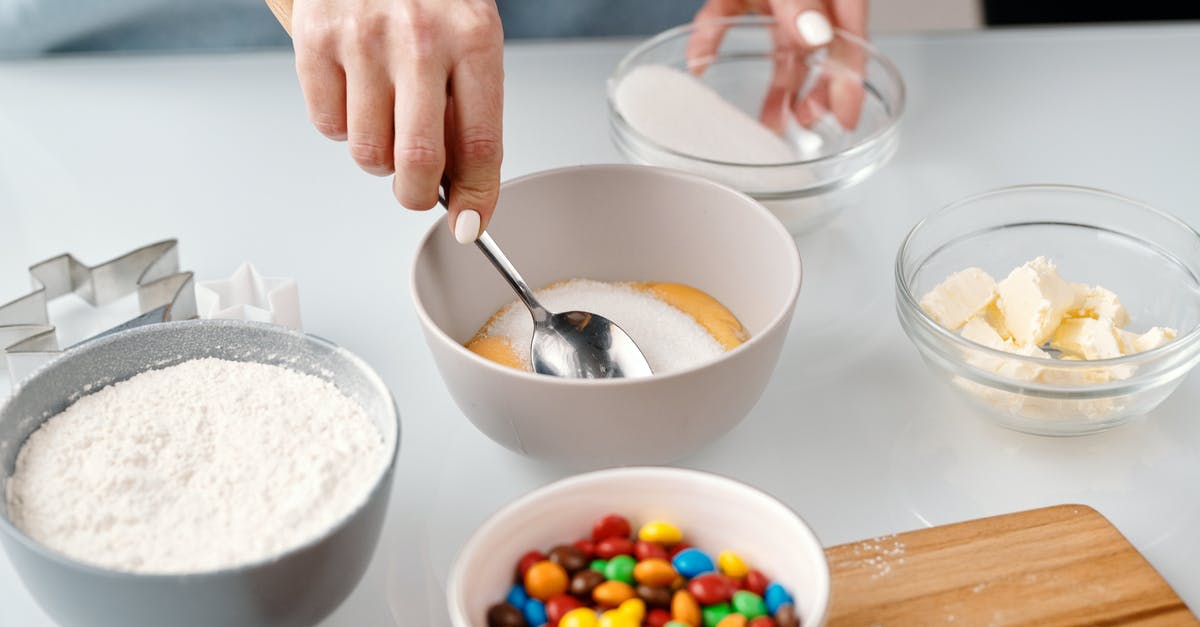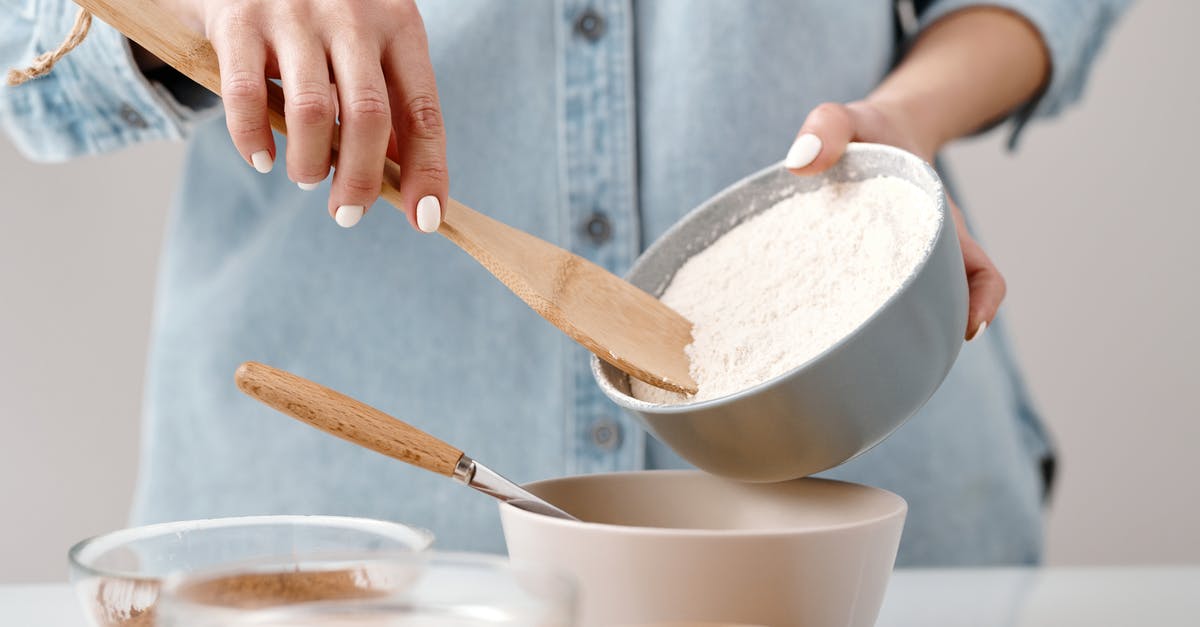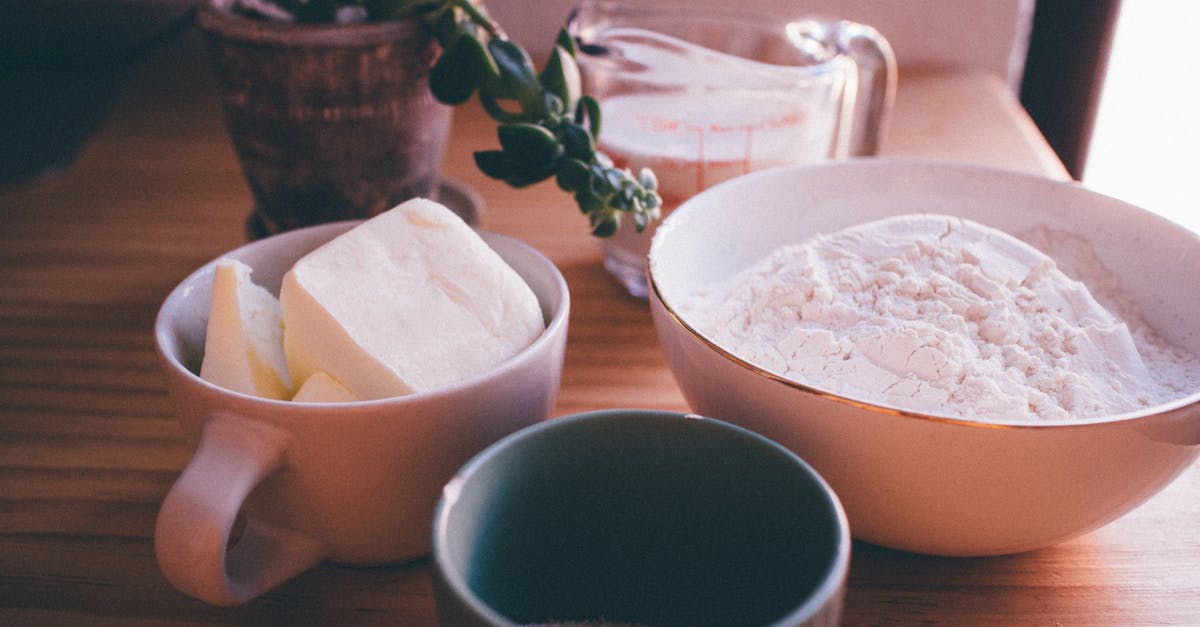creaming butter vs adding to flour in cakes

Most cake recipes call for creaming the butter and sugar first, then adding liquids and flour alternately . Recently I have seen several recipes instructing to add cool butter in small chunks to the flour/sugar mixture beating after each butter chunk, then adding the milk and eggs. what does this produce? Thanks
Best Answer
As Jason Sandeman already said in his answer, adding the butter to mixed dry ingredients (including things other than sugar) is called the "two step" or "two stage" method. Many professional bakers recently have advocated using it to produce more a more tender crumb with a velvety consistency.
In terms of food science, the difference is primarily due to gluten production. In a typical creaming method recipe, the butter and sugar are combined to create bubbles, and those bubbles are stabilized by alternating additions of flour and liquid, which form gluten strands to support the bubbles. The cake rises high due to big bubbles and a support structure.
When the flour is combined with the fat first, the fat envelops many of the flour particles, inhibiting their ability to interact with liquid when added later. Thus, less gluten is formed. Bubble formation is also inhibited somewhat (and bubbles are smaller sized). That means an exceptionally tender cake with a fine crumb, but which won't rise quite as high or be as "light."
The reason it's called the "two stage" method is to differentiate it from a "single stage" mix (or a "quick mix"), where all ingredients are just thrown together, as in a boxed cake mix. (I believe the "two stage" method was originally developed in the 1940s or 50s, when boxed mixes were first becoming popular.) The problem with the "single stage" method is that it will fail with "high ratio" cakes, i.e., those having a significant amount of sugar compared to flour. In that case, a "single stage" mix won't allow the moisture to dissolve the sugar granules fully, resulting in a somewhat "crunchy" or "mealy" sugary texture (like a sugar cookie).
If you don't want your financiers to taste like a sugar cookie, you need to dissolve the sugar thoroughly. And if you value tenderness over lightness, try adding the flour along with the sugar to the butter before the wet ingredients.
Pictures about "creaming butter vs adding to flour in cakes"



Would there be any advantages for creaming prior to the addition of flour compared to mixing of butter sugar vanilla and flour all in one go?
The advantages for creaming prior to the addition of flour compared to mixing of butter, sugar, vanilla and flour all in one go is that the volume of the cake will be greater due to the air cells have been incorporated into the cake batter (Manohar, 2014). The air bubbles will provide a rise in the volume of cake.Does creaming butter make a difference?
The longer you beat the butter and sugar, the lighter and more aerated the mixture becomes. In cookie recipes, a longer creaming time creates a cookie that is more cake-like. Less creaming creates less air, and the cookies will be flatter and chewier.What happens when butter is added to flour?
In biscuits, pie and pastry dough, butter is rubbed or cut into the flour. This causes the particles of flour to be coated in fat molecules, preventing excess liquid (like water or eggs) from absorbing into the flour, which creates an overdevelopment of gluten.What does creaming butter do in baking?
Creaming evenly disperses the sugar throughout the batter, completely dissolving it into the butter. You also increase volume by mixing thoroughly and incorporating more air into your batter. The result? Lighter textured cookies and cakes.How to Cream Butter \u0026 Sugar | Just The Tip | Steve Konopelski
More answers regarding creaming butter vs adding to flour in cakes
Answer 2
Creaming the butter and sugar together incorporates air into the mixture. The air is trapped in the butter and sugar mix. The other method is known as a Two step method... Cakes won't rise as high that way, but will have a smooth texture.
The two are slightly different, and will produce different results. The reason for using the two step method is when your sugar is equal or greater than the weight of the flour in the mix. This way you avoid the mixture splitting.
Answer 3
This sounds like a simplified version of, indeed, an ice water pie dough, where you do not beat but cut the butter into unleavened, optionally sweetened/salted, flour, eg by using a pastry cutter, stout wire whisk (used like a pestle - works a charm but takes some physical force, but hey you'll be eating rich pie later :) or bladed food processor (usually not very effective, will melt too much of the fat) and then join the resulting crumbs with very cold water (so they will not melt and dissolve).
Sources: Stack Exchange - This article follows the attribution requirements of Stack Exchange and is licensed under CC BY-SA 3.0.
Images: Nicole Michalou, Nicole Michalou, Monserrat Soldú, Markus Spiske
